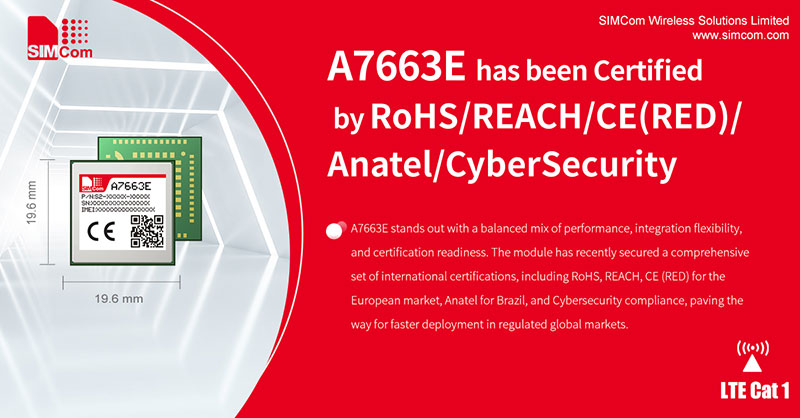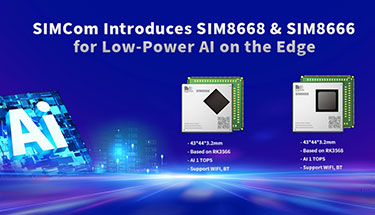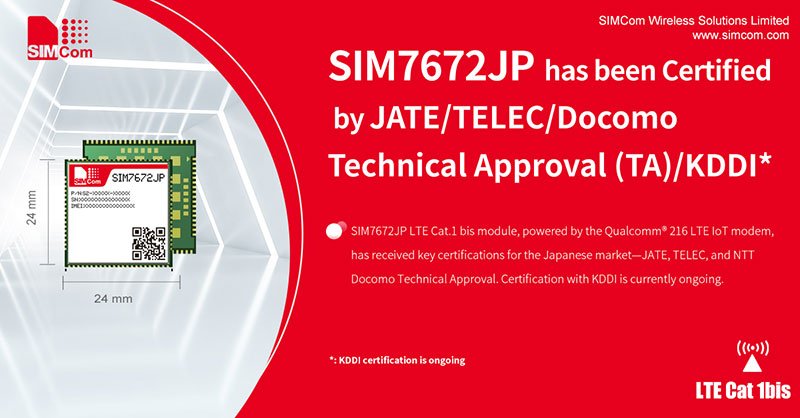- Ameya360 Component Supply Platform >
- Trade news >
- Exploring Infrared Sensors: Types, Applications, and Principle
Exploring Infrared Sensors: Types, Applications, and Principle
In the realm of modern technology, infrared (IR) sensors stand out as versatile and essential components across a wide array of applications. These sensors leverage the infrared part of the electromagnetic spectrum to detect and measure infrared radiation, which can be indicative of heat, motion, and various other parameters. This article delves into the fundamentals of Infrared Sensors, and their diverse applications.

What is an infrared sensor ?Infrared sensors detect radiation in the infrared spectrum, which ranges from about 750 nanometers (nm) to 1 millimeter (mm). Unlike visible light, infrared radiation is not visible to the human eye but can be felt as heat. IR sensors convert this radiation into an electrical signal that can be processed and interpreted by electronic systems.
How many types of IR sensors are there?1. Active Infrared Sensors: These sensors emit their own infrared light and detect the reflected light. They are commonly used in proximity sensors and certain types of motion detectors. An example is the IR LED and photodiode pair, which measures changes in the reflected light to determine the presence of objects.
2. Passive Infrared Sensors (PIR): Unlike active sensors, PIR sensors do not emit any radiation. Instead, they detect the infrared radiation naturally emitted by objects. PIR sensors are widely used in motion detection applications, such as security systems and automatic lighting.
What is the purpose of the IR sensor?IR sensors serve various purposes across multiple applications. Here are some common uses:
1. Proximity Detection
– Used in devices like automatic doors, smartphones, and vehicles to detect nearby objects without physical contact.
2. Motion Detection
– Common in security systems and alarms (e.g., PIR sensors) to sense movement in a defined area.
3. Temperature Measurement
– Employed in non-contact thermometers to measure the temperature of objects or bodies from a distance.
4. Remote Controls
– Found in TVs, air conditioners, and other electronics to facilitate wireless communication with remote controls.
5. Obstacle Avoidance
– Used in robotics and drones to navigate and avoid collisions by detecting nearby objects.
6. Gas Detection
– Some IR sensors can detect specific gases based on their absorption of infrared light, useful in industrial applications.
7. Night Vision and Thermal Imaging
– Used in military, security, and surveillance applications to detect heat signatures in low-light conditions.
8. Data Transmission
– In certain applications, IR can be used for wireless data transfer over short distances.
What is an infrared sensor used for?Infrared sensors have a broad range of applications, benefiting various industries from consumer electronics to healthcare. Here are some notable examples:
1. Consumer Electronics:
– Remote Controls: IR sensors are integral to remote control devices for televisions, air conditioners, and other home appliances. They receive signals from the remote control unit to perform the desired function.
– Smartphones and Tablets: Some devices use IR sensors for facial recognition, which helps in unlocking screens and enhancing security.
2. Healthcare:
– Thermography: Infrared thermography is used for non-invasive temperature measurement, allowing for early detection of fevers and other medical conditions. It’s particularly valuable in monitoring patients’ health and in diagnosing conditions based on temperature anomalies.
– Vital Sign Monitoring: IR sensors can be used in wearable devices to monitor vital signs such as heart rate and blood oxygen levels.
3. Automotive Industry:
– Collision Avoidance Systems: IR sensors help in detecting obstacles and monitoring the surrounding environment to prevent accidents. They are used in parking assist systems and adaptive cruise control.
– Night Vision: Some high-end vehicles are equipped with IR sensors to enhance visibility during night driving by detecting pedestrians and animals on the road.
4. Industrial Automation:
– Temperature Measurement: In manufacturing processes, IR sensors are employed to monitor the temperature of machinery and products to ensure they remain within safe and optimal limits.
– Quality Control: These sensors are used to inspect products for defects and irregularities by detecting variations in thermal emission.
5. Environmental Monitoring:
– Gas Detection: IR sensors can detect the presence and concentration of specific gases in the atmosphere by measuring their absorption of infrared light. This is crucial for monitoring air quality and ensuring safety in industrial environments.
What is the principle of IR sensor?The principle of an infrared (IR) sensor is based on the detection and measurement of infrared radiation, which is electromagnetic radiation with wavelengths longer than visible light. The core principle involves capturing the infrared radiation emitted or reflected by objects and converting it into an electrical signal that can be analyzed. Here’s a detailed breakdown of how IR sensors work:
1. Emission and Detection of Infrared Radiation
Infrared Radiation Basics:
– Infrared radiation is part of the electromagnetic spectrum with wavelengths ranging from approximately 750 nanometers (nm) to 1 millimeter (mm), just beyond the visible light spectrum.
– All objects emit infrared radiation as a function of their temperature. Hotter objects emit more infrared radiation compared to cooler ones.
Detection Principle:
– Active IR Sensors: These sensors emit their own infrared light (often using an IR LED) and then measure the amount of this light that is reflected back from objects in their environment. The detected signal changes based on the distance, size, and properties of the object, allowing the sensor to infer its presence, distance, or other characteristics.
– Passive IR Sensors (PIR): These sensors do not emit any radiation. Instead, they detect the infrared radiation naturally emitted by objects in their field of view. They typically use a sensor element that responds to changes in infrared radiation, such as a pyroelectric detector or a thermopile.
2. Conversion of Infrared Radiation to Electrical Signal
Pyroelectric Detectors:
– Pyroelectric sensors contain materials that generate an electrical charge when exposed to infrared radiation. This charge is proportional to the amount of infrared radiation detected.
– The sensor detects changes in temperature caused by infrared radiation, converting these changes into an electrical signal.
Thermopiles:
– A thermopile consists of multiple thermocouples connected in series or parallel. It measures the temperature difference between the heated element exposed to infrared radiation and a reference element.
– This temperature difference generates a voltage, which is then measured and converted into an output signal.
Photodetectors:
– Some IR sensors use photodetectors (such as photodiodes or phototransistors) sensitive to infrared light. These detectors convert the incident infrared light into an electrical current proportional to the light intensity.
3. Signal Processing
Once the infrared radiation is converted into an electrical signal, the output is typically processed and analyzed by the sensor’s electronics. This may involve amplification, filtering, and digitization of the signal. The processed signal can then be used to trigger actions or provide readings depending on the application. For example:
– In motion detectors, the sensor might trigger an alarm if it detects significant changes in infrared radiation indicating movement.
– In temperature measurement systems, the signal is used to provide accurate temperature readings or to monitor thermal conditions.
How do I choose an IR sensor?Choosing an infrared (IR) sensor depends on several factors related to your application. Here’s a quick guide to help you make the right choice:
1. Type of IR Sensor
– Active IR Sensors: Emit IR light and measure reflections (e.g., proximity sensors).
– Passive IR Sensors: Detect IR radiation from objects (e.g., PIR sensors for motion detection).
2. Detection Range
– Consider the distance over which you need to detect objects. Check the specifications for range and field of view.
3. Sensitivity
– Look for specifications on sensitivity, which determines how small a change in IR radiation the sensor can detect.
4. Environmental Conditions
– Ensure the sensor can operate in the conditions it will face (temperature, humidity, dust, etc.).
5. Response Time
– Consider how quickly the sensor needs to respond. This is crucial for applications like motion detection.
6. Output Type
– Decide whether you need digital output (on/off) or analog output (variable signal) based on how you’ll process the sensor data.
7. Power Consumption
– Look for power-efficient models if you’re running on batteries or need to minimize energy use.
8. Size and Form Factor
– Ensure the physical size and mounting options fit your project requirements.
9. Cost
– Determine your budget, as prices can vary widely based on features and capabilities.
10. Manufacturer Support
– Choose brands or suppliers that provide good documentation and support.
How far can IR sensors detect?The detection range of IR sensors can vary significantly based on the type of sensor and its design:
1. Active IR Sensors
– Proximity Sensors: Typically have a range of a few centimeters to a few meters (around 0.1 to 5 meters) depending on the sensor’s power and environment.
– IR Range Finders: Can detect distances up to 10-20 meters or more, depending on the model and application.
2. Passive IR Sensors (PIR)
– Commonly used for motion detection in security systems, these sensors usually have a range of about 5 to 12 meters (16 to 40 feet). The actual range can be influenced by factors such as the angle of detection and the presence of obstacles.
3. IR Cameras and Thermal Sensors
– These devices can detect heat signatures at much greater distances, often exceeding 100 meters, depending on the resolution and the environment.
Factors Influencing Range
– Sensitivity: Higher sensitivity allows for detection at greater distances.
– Environmental Conditions: Obstructions, temperature, and humidity can affect performance.
– Field of View: A wider field of view may reduce the effective detection range.
ConclusionInfrared sensors are indispensable components in modern technology, offering critical functionalities across various fields. From enhancing consumer electronics to advancing healthcare and industrial automation, their applications are both diverse and impactful. As technological advancements continue to push the boundaries of what is possible, IR sensors are poised to become even more integral to our everyday lives, driving innovations and efficiencies across multiple sectors. Understanding their technology and applications provides valuable insights into how these sensors are shaping the future of technology and industry.
Online messageinquiry
- Week of hot material
- Material in short supply seckilling
| model | brand | Quote |
|---|---|---|
| TL431ACLPR | Texas Instruments | |
| CDZVT2R20B | ROHM Semiconductor | |
| MC33074DR2G | onsemi | |
| RB751G-40T2R | ROHM Semiconductor | |
| BD71847AMWV-E2 | ROHM Semiconductor |
| model | brand | To snap up |
|---|---|---|
| BU33JA2MNVX-CTL | ROHM Semiconductor | |
| STM32F429IGT6 | STMicroelectronics | |
| IPZ40N04S5L4R8ATMA1 | Infineon Technologies | |
| ESR03EZPJ151 | ROHM Semiconductor | |
| BP3621 | ROHM Semiconductor | |
| TPS63050YFFR | Texas Instruments |
- Week of ranking
- Month ranking
Qr code of ameya360 official account
Identify TWO-DIMENSIONAL code, you can pay attention to


Please enter the verification code in the image below:


























